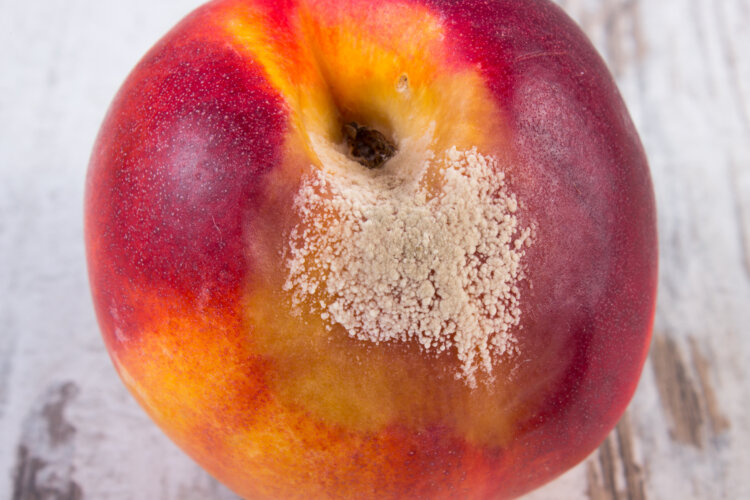
While many of us do our best to get to the OBGYN at least once a year for a check-ups, I also know a lot of women who turn to Dr. Google when it comes to a question or concern about vaginal health, especially when it comes to yeast infections. However, in some (most?!) cases, relying on online searches for self-diagnosis only creates more worries and problems than solutions. That’s why we decided to talk to an actual expert!
Dr. Maria Sophocles MD, FACOG, NCMP is a board-certified OB/GYN with more than 25 years of medical experience, and she’s here to help us out with some common vaginal health concerns. As the Medical Director of Women’s Healthcare of Princeton, Dr. Sophocles has seen it all, which is why we asked her about some common yeast infection-related questions to see if they were more old wives’ tale or the truth.
What is a yeast infection?
Yeast infections are fairly common—in fact, around 75 percent of women will experience them at least once in their lives, and many experience multiple cases. When a yeast infection occurs, you might feel an itching or burning sensation when you urinate or during sex. There may also be some redness and swelling of the vulva, and in some cases, a thick, white, odorless discharge.
Yeast infections can be caused by a variety of things, including hormones, changes in diet, antibiotics, frequent baths (and any other prolonged moist conditions), douches and vaginal sprays, sex, and a weakened immune system. There are some myths or uncertainties surrounding yeast, so we turned to Dr. Sophocles to help us out.
Hanging out in a wet bathing suit can cause yeast infections.
TRUE! According to Dr. Sophocles, “yeast grows well in moist and warm environments. A damp or wet bathing suit or workout wear is yeast-friendly.” She notes that some women get yeast infections more easily while others never seem to get them. She warns that if you get them easily, “…try getting out of that wet swimsuit or your exercise duds as soon as you can; also wearing a long skirt and no underwear ( if you dare!) is good for you. And of course no underwear at bedtime.”
Cotton underwear is the best option.
TRUE! Cotton boasts the trifecta of softness, absorbency and breathability, explains Dr. Sophocles. The softness is gentle on your skin, the absorbency wicks away perspiration, and its breathability facilitates evaporation of moisture that could be trapped by synthetic materials like lycra or nylon, causing bacteria to grow. Cotton should be worn all year round, but especially during the summer or when experiencing high humidity. If anything, says Dr. Sophocles, try to at least wear underwear that has a cotton lining on the inside.
You can treat a yeast infection with home remedies.
TRUE! There are a number of natural and at-home ingredients you can use to self-treat a yeast infection before seeing your doctor.
- Boric acid. Vaginal boric acid capsules can work for women with a yeast infection, which has been backed up by scientific studies. They are safe and effective. Dr. Sophocles recommends 600 mg capsules once or twice daily inserted vaginally for two to three weeks.
- Tea tree oil. This potent oil has antibacterial and anti-fungal properties, which can help alleviate yeast. Dr. Sophocles warns that tea tree oil can be a skin irritant, so it should be mixed with another mild oil to dilute (like coconut oil), and she suggests testing it first on your inner wrist, which also has sensitive skin, before applying it to irritated vaginal skin.
- Probiotic supplements. Dr. Sophocles says that studies have shown oral and vaginal probiotics such as RepHresh Pro-B reduce yeast growth.
- Natural yogurt. Plain (unflavored!) yogurt contains beneficial bacteria, and Dr. Sophocles notes that there is plenty of anecdotal evidence that supports it. But make sure it is plain, because any sugar in the product will only feed the yeast! You can both eat and apply the yogurt to any irritated skin.
- Coconut oil. This soothing oil inserted vaginally can help with any itching.
- Garlic. Dr. Sophocles says that one study showed that garlic was effective against yeast, but that it’s not a widely accepted treatment, so use cautiously.
- Oil of oregano. According to Dr. Sophocles, oil of oregano has been shown to completely inhibit growth of the most common strain of yeast: candida albicans. She notes that it is the oil that accomplishes this, and not the herb itself (so don’t go sprinkling dry oregano anywhere!). Like tea tree oil, it can be mixed with a carrier oil such as olive oil or sweet almond oil, and should should not be applied directly to vaginal tissue.
When to make a doctor’s appointment.
While Dr. Sophocles says that home remedies may be enough to combat some yeast infections, there are times when you should visit your provider. Head to the doctor’s office if you have:
- A yeast infection which does not respond to home treatment
- Chronic or recurrent infection
- Symptoms suggestive of pelvic pain and an abnormal discharge which has a bad, strong odor or is accompanied by frothy discharge
- Yeast during pregnancy
Dr. Sophocles’ top three tips for maintaining a healthy vaginal flora.
- Cotton underwear or cotton crotch underwear
- Avoid tight fitting pants or prolonged time in sweaty or wet clothes
- Avoid douching, sharing sex toys, and irritating vaginal creams or sexual lubricants


Grok Nation Comment Policy
We welcome thoughtful, grokky comments—keep your negativity and spam to yourself. Please read our Comment Policy before commenting.